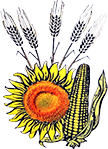Evaluation of the Useful Arthropods Diversity Incereal Agroecosystems from Transylvania Center
Ana Maria Vălean1, Dana Malschi3, Adina Tărău1, Laura Şopterean1, Florin Russu1, Loredana Suciu2
1Staţiunea de Cercetare-Dezvoltare Agricolă Turda
²Universitatea de Ştiinţe Agricole şi Medicină Veterinară Cluj-Napoca
3Academia de Științe Agricole și Silvice „Gheorghe Ionescu-Şişeşti” București
Keywords: useful arthropods, pests, agroecosystems, agroforestry curtains, evaluation.
Abstract: The increase in agricultural production is conditioned by a number of factors, among which plant protection against pests plays a very important role. Sustainable exploitation, by implementing sustainable agricultural practices, can make an important contribution to the proper functioning of the ecosystem. These good agricultural practices also include the provision of natural habitats for useful entomophagous species as well as biological pest control. Along with chemical methods, lately, methods of biological control of crop pests have become widespread and one of these methods is the use of entomophagous (predators and parasites). Therefore, during the years 2016-2018, a study was carried out on the monitoring of useful entomofauna for the winter wheat crop, in two types of agroecosystem, at Turda and Bolduț, from Agricultural Research and Development Station Turda. The two locations are quite close in terms of distance, but very different in terms of territorial organization, the farm from Bolduț being framed by a network of agroforestry curtains. In Turda, the soils are located in open field conditions and are protected from rare spontaneous marginal edges. The research aimed to evaluate the diversity of entomophagous in the two agrobiocenoses, but also the influence of the agroecosystem on the useful entomofauna.
Based on the observations made it can be stated that the entomophagous arthropods identified in the two agroecosystems, differs only in terms of ecological indicators, they belong to the same groups of entomophagous, their diversity being closely related to climatic conditions, applied technology, but also to the type of agroecosystem. The Presence of entomophagous in both agrobiocenoses reflects the predominance of spiders with absolute values of 644 individuals in Turda and 933 individuals in Bolduț.
